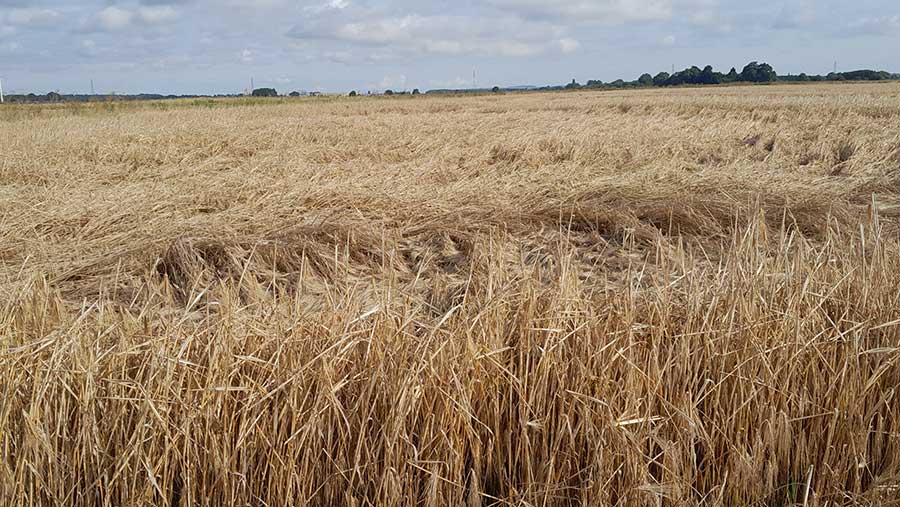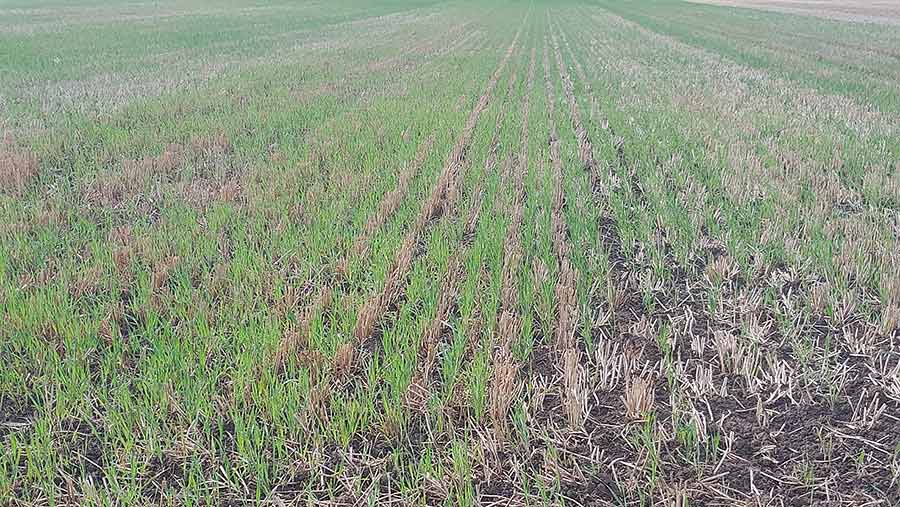Lincs winter barley harvest lodged in wettest month of the year
 © Colin Chappell
© Colin Chappell July has been the wettest month since October last year for Lincolnshire grower Colin Chappell, who has battled harvest rainstorms including 92mm in 16 days, and lodged winter barley.
“We’ve been harvesting the winter barley for weeks now – cutting at every moment physically possible, and we’re still not finished. It’s been raining every day. Even on the forecast dry days it rains,” says Colin.
See also: Early winter wheat harvest down by 2t/ha in Dorset
It would usually take two or three days to get his 45ha winter barley crop safely in the shed at Gander Farm in north Lincolnshire, but this year it has been a long drawn-out two to three weeks.
Frustrations continue to rise as crops lodge, losing yield, quality and colour.
Low N barley
Now 75% of the way through winter barley harvest, Colin is particularly pleased with the performance of his low-nitrogen six-row variety Thunderbolt.
Grown on just 59kg N/ha, it has yielded an impressive 8.5t/ha at 16% moisture and a specific weight of 63kg/hl.
“With input costs where they are and government policy changing, now is the time to be trying new things,” he says.
“Going forward, we have to read our crops and tailor agronomy to what is in the field in front of us.”
The low-N crop was planted on 12 October after an early harvest of maize, which left residual N in the soil profile.
Colin would usually apply 130-140kg N/ha but after his first application of 49kg N/ha, he soon realised crops were looking forward and there was scope to cut back fertiliser.
After three applications of growth regulators, a foliar feed top-up of 10kg N/ha in May, and two fungicide passes, the crop was ready for harvest.
While initial yields of his conventionally grown Thunderbolt came in above 10t/ha, the harvest team was quickly rained off.
“The crop has now lodged so we won’t get a true comparison,” he notes.
“In hindsight, another pass of foliar N would have evened up the yields and made gross margins truly comparable, but with early lodging we weren’t prepared to push too much.”
In comparison, his two-row Tardis winter barley, grown for seed on sandy soils, yielded 9t/ha with 130kg N/ha.

Colin Chappell’s summer barley © Colin Chappell
Summer barley
A crop of “summer” barley was planted on 20 June after foraged winter barley.
With the aim of keeping the soil covered and living roots thriving, he decided to plant the crop of spring barley into the good seed-bed conditions to see if he could add an extra crop to the rotation.
“The summer barley is looking fantastic. Within four days it was up and within seven days it was in its rows.
“Planting the summer crop is nothing new,” Colin says.
“It’s in all the old textbooks. There’s not a lot new in agriculture – it’s all been done before. In fact, if you stay still for long enough in farming, you become a pioneer.”
The intention is to combine the crop in October or forage it for the local anaerobic digester plant after they finish the maize. “If all else fails, it becomes a form of cover crop/overwinter bird food,” he says.
Next steps
With winter oilseed rape, wheat, beans and oats still to be harvested, Colin is concerned that once the weather does dry up everything will come at once.
“At the moment I’m not looking for any more headaches. We can only work with the weather so I’m trying to remain optimistic.”

